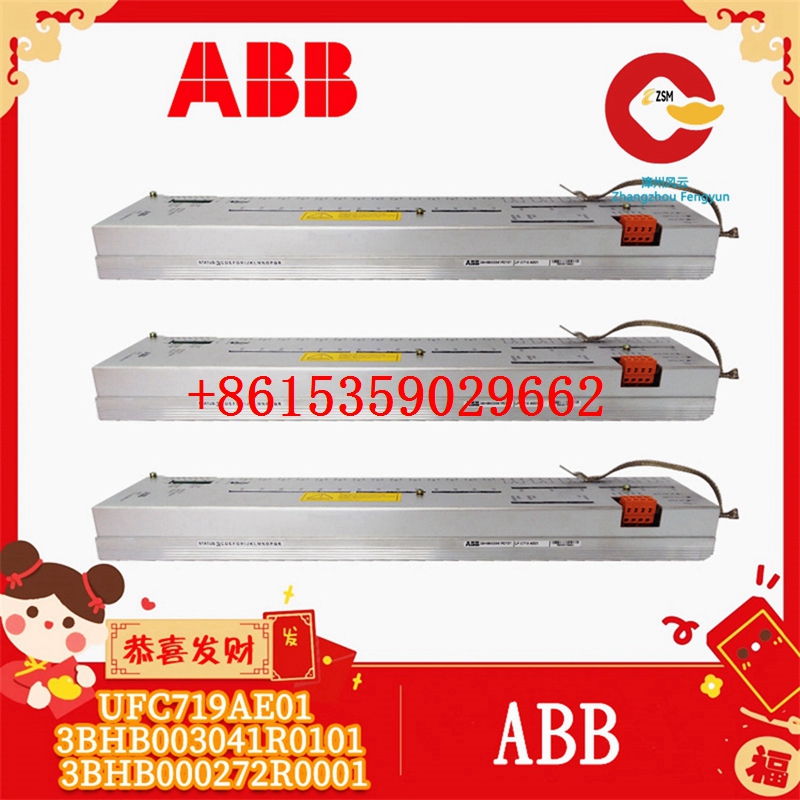Technical Parameters of ABB HIEE200130R0002 AF C094 AE02 ARCnet Panel Display

1. General Overview
The ABB HIEE200130R0002 AF C094 AE02 ARCnet Panel Display is a high – quality human – machine interface (HMI) device designed for industrial automation systems. It serves as a visual and interactive interface between operators and the underlying control equipment, providing real – time information, facilitating control operations, and enhancing the overall efficiency and manageability of industrial processes.
2. Display Characteristics
- Display Type: Typically equipped with a flat – panel display, often using LCD (Liquid Crystal Display) technology. This technology offers high – resolution, sharp images with good contrast and color reproduction, ensuring clear and legible information display even in varying lighting conditions.
- Display Size: Has a specific display size (the exact size may vary depending on the product variant; for this model, assume a standard industrial – grade size suitable for panel mounting). The size is optimized to provide a comprehensive view of the process information while fitting within the available panel space in industrial control cabinets.
- Resolution: Supports a high – resolution display, enabling the presentation of detailed graphics, process diagrams, and text data. A high resolution ensures that small details and complex information can be displayed clearly, improving operator situational awareness.
3. Communication Capabilities
- ARCnet Interface: The “ARCnet” in the model name indicates its support for the ARCnet communication protocol. ARCnet (Attached Resource Computer Network) is a local area network technology designed for industrial applications. It provides reliable and deterministic communication between the panel display and other ARCnet – compatible devices in the automation system, such as programmable logic controllers (PLCs), remote I/O units, and other intelligent devices.
- Additional Communication Ports: May also include other communication ports (the exact ports depend on the product configuration), such as RS – 232, RS – 485, or Ethernet ports. These ports allow for integration with a wider range of industrial equipment and systems, supporting different communication protocols like Modbus, Profibus, or Ethernet/IP, enhancing the interoperability of the display within the automation network.
4. User Interface Features
- Touchscreen Functionality: Often comes with a touchscreen interface, enabling operators to interact with the display directly by touching the screen. This intuitive interface simplifies control operations, reduces the need for external input devices, and speeds up the operator’s response time. The touchscreen is designed to be durable and responsive, even in industrial environments with potential dust, moisture, or vibration.
- Keypad (Optional): In addition to the touchscreen, some variants may have an optional keypad for additional input options. The keypad provides a tactile feedback mechanism, which can be useful in certain operating conditions or for operators who prefer a more traditional input method.
- Menu Structure and Navigation: Features a well – organized menu structure that allows operators to easily access different functions, process data, and control parameters. The navigation is designed to be user – friendly, with clear icons, labels, and logical menu flows, minimizing the learning curve for new operators.
5. Data Presentation and Visualization
- Process Graphics: Can display custom – made process graphics that represent the industrial process being monitored and controlled. These graphics can include animations, trend charts, and status indicators, providing a visual representation of the process state and allowing operators to quickly identify any abnormalities or deviations from the normal operating conditions.
- Alarm Management: Offers comprehensive alarm management capabilities. It can display real – time alarms, acknowledge alarms, and provide detailed information about the alarm source, severity, and recommended actions. Alarm history can also be stored and reviewed for post – incident analysis and process improvement.
- Data Logging and Trending: Supports data logging of key process parameters over time. Operators can view historical data in the form of trend charts, which help in analyzing process performance, identifying trends, and making informed decisions about process optimization and maintenance.
6. Environmental Specifications
- Operating Temperature: Designed to operate within a specified temperature range, typically from – 20°C to + 60°C (the exact range may vary). This ensures reliable performance in industrial environments with varying temperatures, such as manufacturing plants, power generation facilities, or oil and gas refineries.
- Humidity Resistance: Built to withstand a certain level of humidity, with a relative humidity range of up to 95% (non – condensing). This makes it suitable for installation in humid or damp environments, where moisture could potentially damage electronic equipment.
- Vibration and Shock Resistance: Complies with industrial vibration and shock standards, ensuring its mechanical integrity and reliable operation in environments with mechanical stresses, such as near heavy machinery or in areas prone to seismic activity.
7. Power Supply
- Input Voltage Range: Accepts a wide range of input voltages, commonly from 85V to 264V AC or 110V to 300V DC (the exact range may vary). This provides flexibility in power supply selection and ensures reliable operation even in environments with voltage fluctuations.
- Power Consumption: Has low power consumption, which helps to reduce operating costs and environmental impact.
8. Mechanical Design and Mounting
- Panel Mounting: Designed for panel mounting, with a standard mounting size and mechanism that allows for easy installation in industrial control panels. The mounting design ensures a secure and stable fit, protecting the display from mechanical damage and vibrations.
- Enclosure Rating: May have an enclosure rating (such as IP rating) that indicates its level of protection against dust and water ingress. A higher IP rating provides better protection in harsh industrial environments.
In summary, the ABB HIEE200130R0002 AF C094 AE02 ARCnet Panel Display is a feature – rich and reliable HMI device that offers advanced communication, user – friendly interface, and comprehensive data presentation capabilities. It is well – suited for industrial automation applications, providing operators with the tools they need to effectively monitor and control industrial processes.


